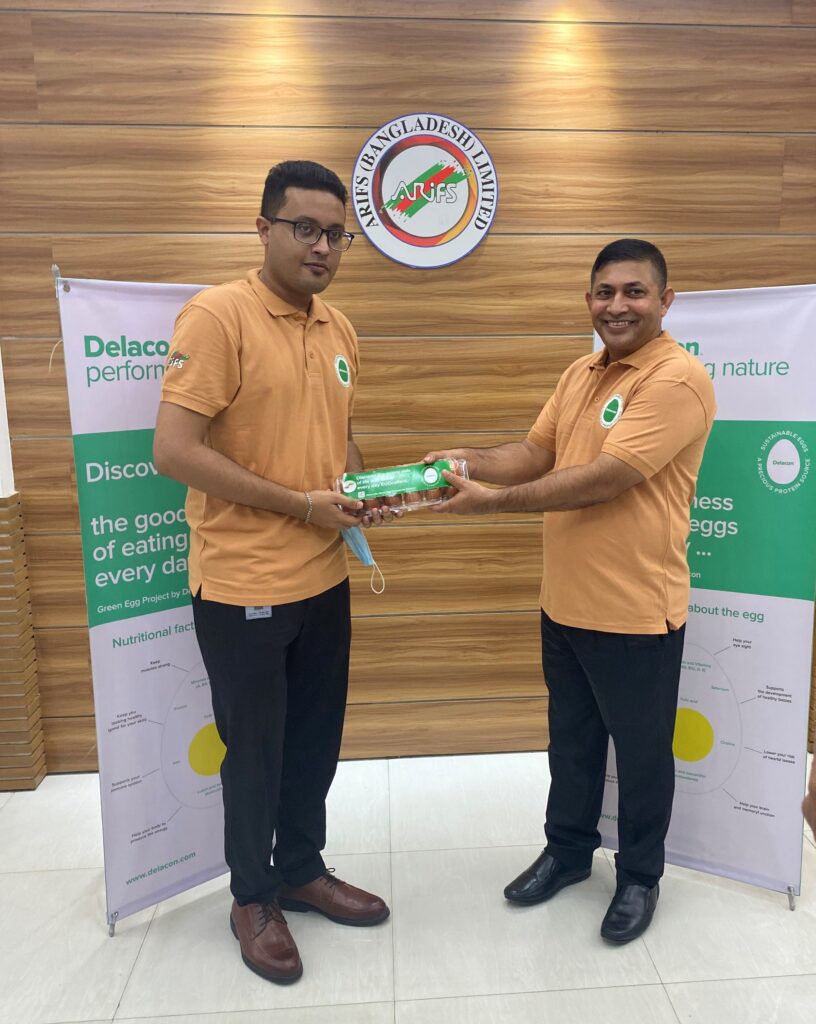Delacon creates global awareness for sustainable egg consumption

The positive impact of eggs on animals, consumers, and the environment
Brazil, Bangladesh, October 2021 – For already the 5th year in a row, Delacon is celebrating World Egg Day (Oct 8) through the company’s “Green Egg Campaign.” This initiative’s primary goals are to focus on consumer awareness of eggs as a precious protein source, strengthen the local egg-laying industry, and increase egg consumption. After the success of this campaign in Asia, Delacon expanded its reach to a global level by distributing eggs and organizing educational events in collaboration with the Bethesda Children’s Village Social and Educational Center in Brazil and local distributor Arifs Ltd. in Bangladesh.
With a constant global population rise, the demand for nutritious food and protein is high. In addition, according to the Brazilian Association of Animal Protein, egg consumption significantly increased in 2020, directly correlated to the recession triggered by the pandemic. With the growing demand, producers seek for safe and sustainable animal production. The importance of natural alternatives such as phytogenics has increased significantly as they improve feed conversion, increase laying rate, enhance egg quality, and reduce the carbon footprint. Based on years of research, the industry is getting more aware of the high impact animal nutrition has on egg quality and on the environment.
Educating about the benefits of eggs on a global level
Delacon collaborated with the Bethesda Children’s Village Social and Educational Center in preparation for the World Egg Day. Delacon’s Regional Technical Manager Maria Luiza Ruiz and Sales Group Lead Latin America, Roberto Montanhini Neto, organized an afternoon full of educational activities. Dr. Maike Maziero was invited to talk about the benefits of consuming eggs and the production process, as well as their different structural components. In addition, more than 1,000 eggs were given to the students.

“We care about future generations and feel delighted to be part of the development of future generations because it is from them that the new production and consumption habits will be designed,” says Roberto Montanhini Neto.
Due to the Covid-19 restriction in Bangladesh, Delacon collaborated this year with local distributor Arifs. By giving eggs to the families and enjoying a wholesome “egg curry” dish together, Delacon pursued its goal of raising awareness about the health benefits of this nutritious protein source.

About Delacon
For more than 30 years, Delacon is dedicated to its vision to unlock the plant universe for better lives. Serving this purpose, the company manufactures plant-derived solutions for the poultry, swine, ruminant and aquaculture industry. Using the power of nature, they have proven efficacy in maximizing feed efficiency as well as a sustainable impact on animals, people, and the environment. Today, they are known worldwide under the term “phytogenics”, and Delacon is recognized as the globally leading expert in this field.
www.delacon.com | office@delacon.com | +43 7235 22 990-0




